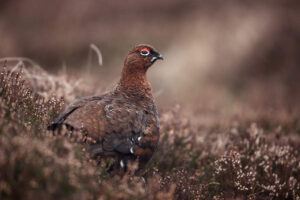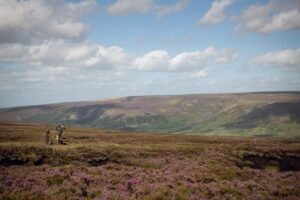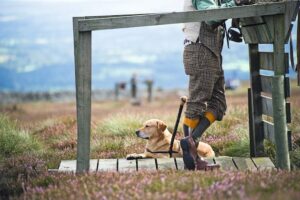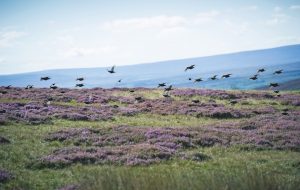While we cannot improve your natural shooting abilities (although you might like to read George Digweed’s grouse shooting tips here), we CAN advise you on what to wear grouse shooting…
Grouse shooting
Your guide to safe grouse shooting
Read Mark Osborne's top tips for grouse shooting in safety
Grouse beaters: on the beat
Grouse beaters have to walk about 15 miles a day across difficult, upland terrain in all weather conditions whilst being shouted at from every direction. But despite the demanding conditions,…
The Field’s 12 top tips for grouse shooting
Twelve top tips for grouse shooting, with essential advice on what to wear how to shoot and how to look like a seasoned pro on the moor
How to shoot grouse. The must-read guide.
How to shoot grouse well is what those heading to the moor for the first or fourtieth time always keep in mind. No one stands in the butt without some…
5 grouse shots you need to know this season
Adam Calvert gives the lowdown on the five essential grouse shots you need to know for this season, and the golden rules to stick to. The Field’s Macnab Challenge is…
George Digweed’s guide to grouse
From why grouse present such a challenge to how to shoot successfully on the moor, George Digweed shares his top tips in this guide to grouse. Whether this season will…
A sporting paradise on the moorland
Sir Johnny Scott takes an evocative look at the lure of moorland, a utopia high in the heather. The modern Macnab Challenge: bagging a salmon, stag and brace of grouse…
Types of grouse: which is toughest?
Types of grouse is a passionately debated point. Are there distinct subscpecies of our favourite gamebird and, if so, which is the toughest? Sir Johnny Scott investigates whether Scottish grouse…
New study reveals the great benefits of grouse shooting to moorland communities
A new study has been conducted by the University of Northampton to assess the economic and social effects of integrated moorland management, including grouse shooting. Researchers found that the great…














